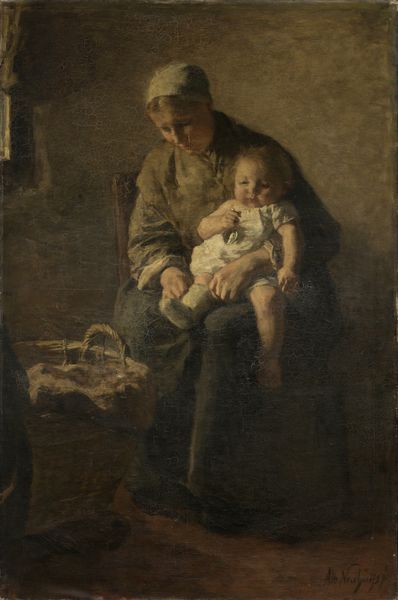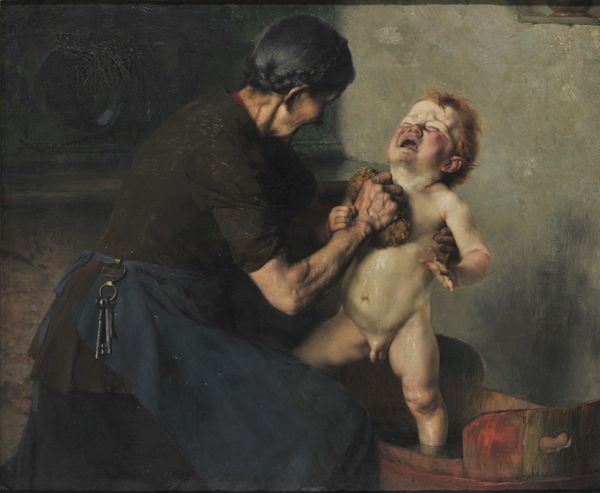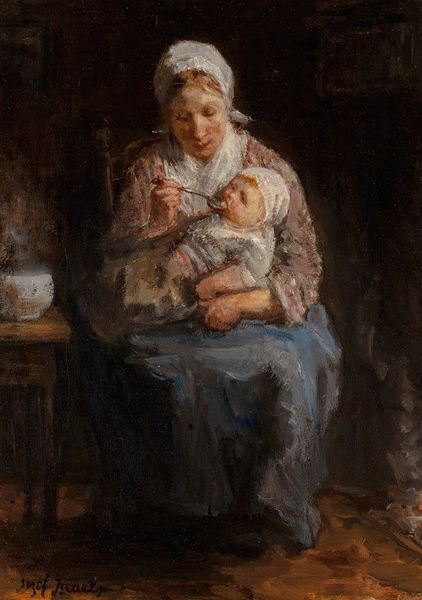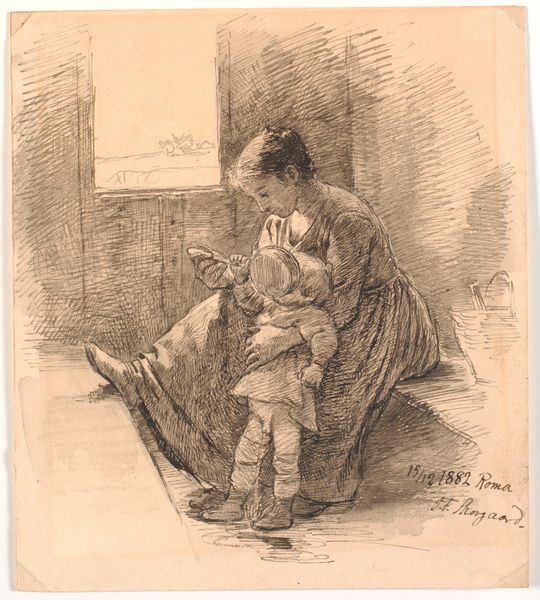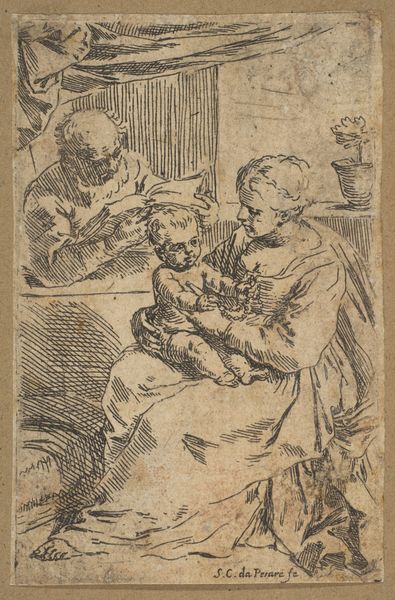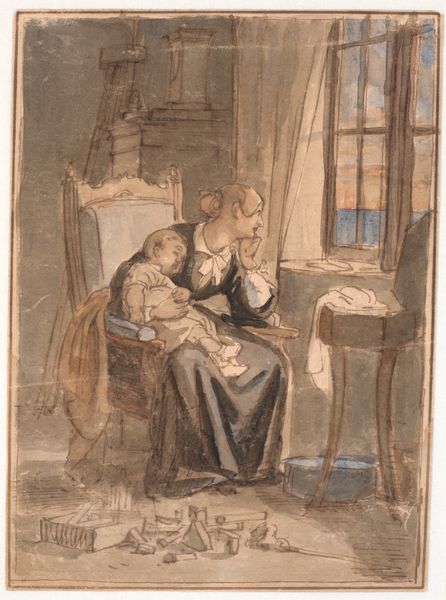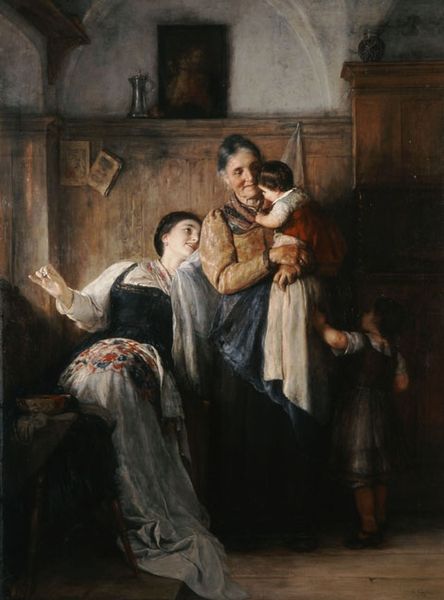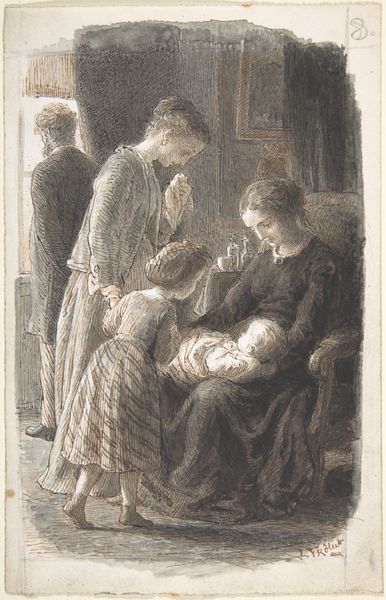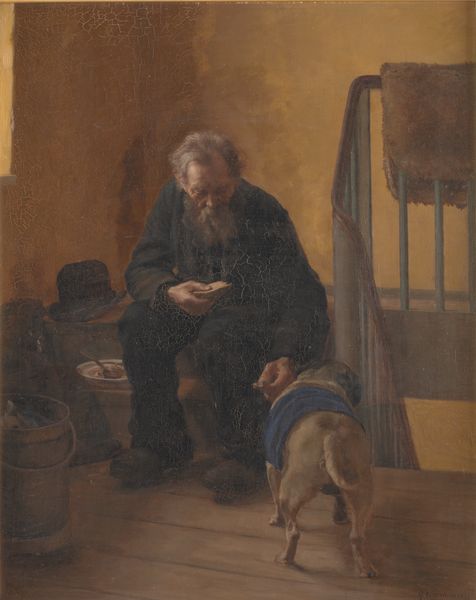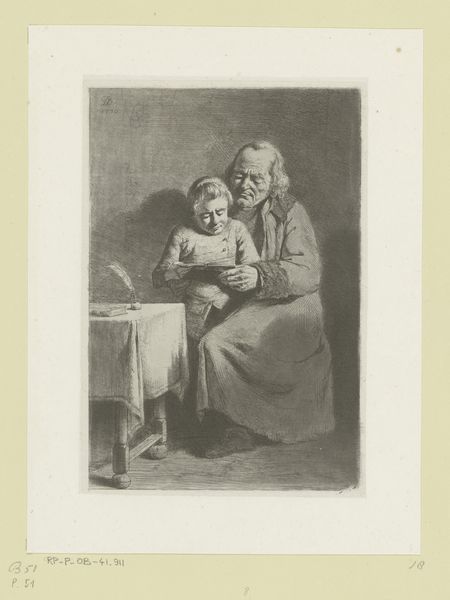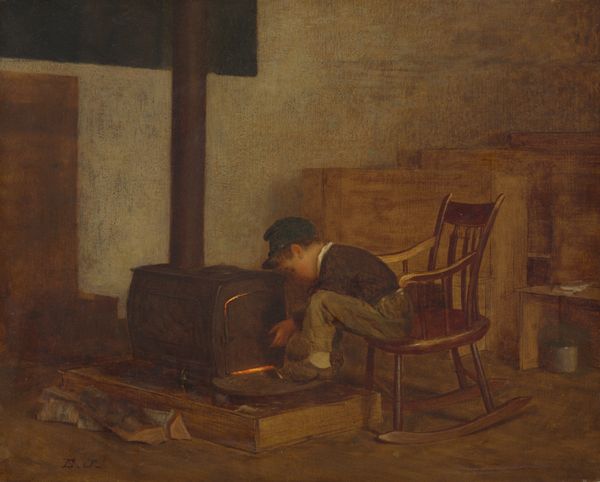
Dimensions: 103.5 cm (height) x 90 cm (width) (Netto)
Curator: This is Joakim Skovgaard's "Kunstnerens hustru med to børn," or "The Artist's Wife with Two Children," painted in 1890. It's currently held here at the SMK, the Statens Museum for Kunst. Editor: It's a very warm, intimate scene. The earth tones are so dominant, creating a mood that feels both personal and… a little somber. Curator: Indeed. Skovgaard rendered it with oil paint on wood, employing quite a bit of impasto to build up the surfaces, adding to that tangible, earthy quality. Think about the sheer labor involved in producing oil paints at the time and applying those paints on the board. The way the surface interacts with the light isn't incidental; it's part of the story. Editor: The Madonna-like figure is striking. It's more than just a genre painting. The motif of motherhood is a universal, powerful symbol, wouldn’t you say? Look at the positioning: she is the pillar, she protects and gives. Curator: Agreed, and the placement of domestic items in the room can be seen as another means to that protective gesture. Consider what their placement suggests. Skovgaard is both celebrating the domestic space and perhaps elevating the labor performed within it. Editor: Absolutely. This image presents the family sphere as its own self-contained world, shielded from outside forces, echoing similar paintings of the time where the mother and child become emblematic of purity and nurture. Note how the face of the breastfeeding child is illuminated whereas his wife's face remains largely in the shadow. Curator: Shadow can represent many things. It might denote humility and a mother's duty. But in terms of process, consider what creating light, contrasting it with the shadows does to the surface: he wants us to consider this family and question who protects who? Is the mother also not dependent on her children for support and labor? Editor: Fascinating point, as is your reference to labor and what that reveals in terms of value. Curator: Ultimately, this portrait offers us both a glimpse into Skovgaard’s personal life and broader insight into late 19th-century social dynamics, and the means with which those relationships and domestic objects were created and upheld. Editor: A sensitive depiction of a foundational relationship and what is embedded there as metaphor and meaning!
Comments
No comments
Be the first to comment and join the conversation on the ultimate creative platform.
